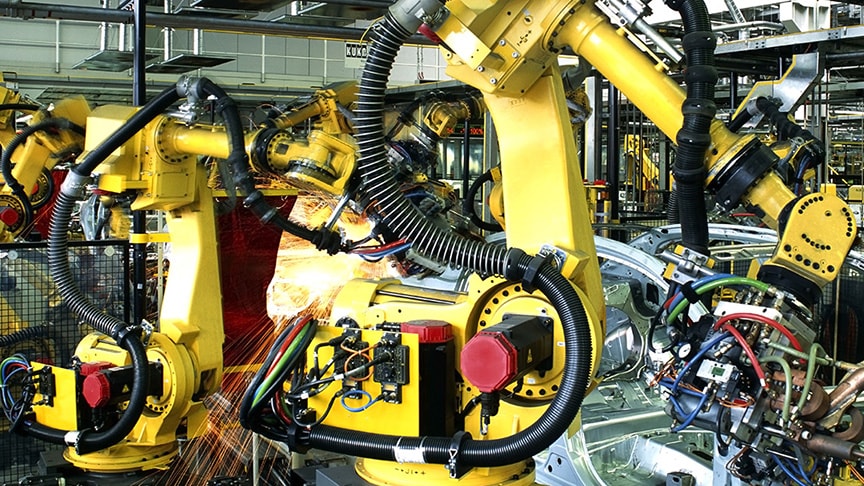It was a late summer's afternoon in San Francisco and I'd just finished a long day of talking technology at Dreamforce 12 when I was introduced to the term the 'Industrial Internet.' I was listening to guys from GE discuss how they were connecting their jet engines to Chatter. How they were using this social media tool to monitor, test and maintain millions of dollars of engineering investment. How they were embedding their technology with Internet devices that ensured direct communication.
Sure, I've read a lot about the Internet of Things and even blogged about it, but there was something about this discussion that made me sit up and take note. Perhaps it was the engineers’ enthusiasm or perhaps it was seeing the technology demonstrated but I was hooked. I started to wonder how other companies could apply this technology, not only to foster more social means of communication but to make their technology more interactive. What happens when you bring your manufacturing process online? What happens when you embrace the Industrial Internet?
I was reminded of this discussion last week when reading an MIT Technology Review piece on GE's newest U.S. factory. Situated in New York, every ounce of this factory has been built to drive forward the Industrial Internet. It has over 10,000 sensors spread across 180,000 square feet that are all connected to a high-speed Ethernet network. Employees at the factory monitor everything that's taking place on their iPads. Every aspect of the manufacturing process can be analysed and altered without any delay.
GE is still at the early stages of its journey into the Industrial Internet but it’s already showing some strong commitment and innovation. In November 2012, it announced plans to invest $1.5 billion in efforts to connect machine data to its enterprise software (including Chatter) and the wider Internet. GE's CEO, Jeff Immelt, is clearly excited about the possibilities here and speaks frequently about the topic. Take a look at Immelt's piece on the rise of intelligent machines.
When you look at the figures you can understand why Immelt is so convinced. If GE can use the Industrial Internet to gain just 1% in fuel efficiency, it would yield $30 billion in savings in aviation, $66 billion in the power generation industry and $63 billion in the healthcare industry. I could continue but you get the idea. We're talking significant money.
There can be no question that other companies have been using similar ideas for a while. However, where GE differs is in its size and scope. GE's ambitions are impressive. What's even more impressive is how it wants to connect this data. It doesn't want isolated silos. It wants its teams to be able to access and use this information on a global scale. GE is not only talking about the Internet of Things, it's talking about Big Data too. In effect, it’s talking about a marriage of the two.
As with any marriage, you need someone to officiate. In this situation, there's only one body capable of doing this and that's the network. The pertinent question though is whether the network’s ready to fill this role. We're all aware of the current drive to 4G mobile networks, of the drive to push fiber as far and as wide as possible, but does the infrastructure we have now meet GE's expectations?
There's no easy answer to this question. GE works on a global scale and are our global networks capable of meeting these demands? Are our networks ready for the coming era of the Industrial Internet?
Lots of questions on this subject. Let me know what you think. This is going to be a hot topic in 2013.
